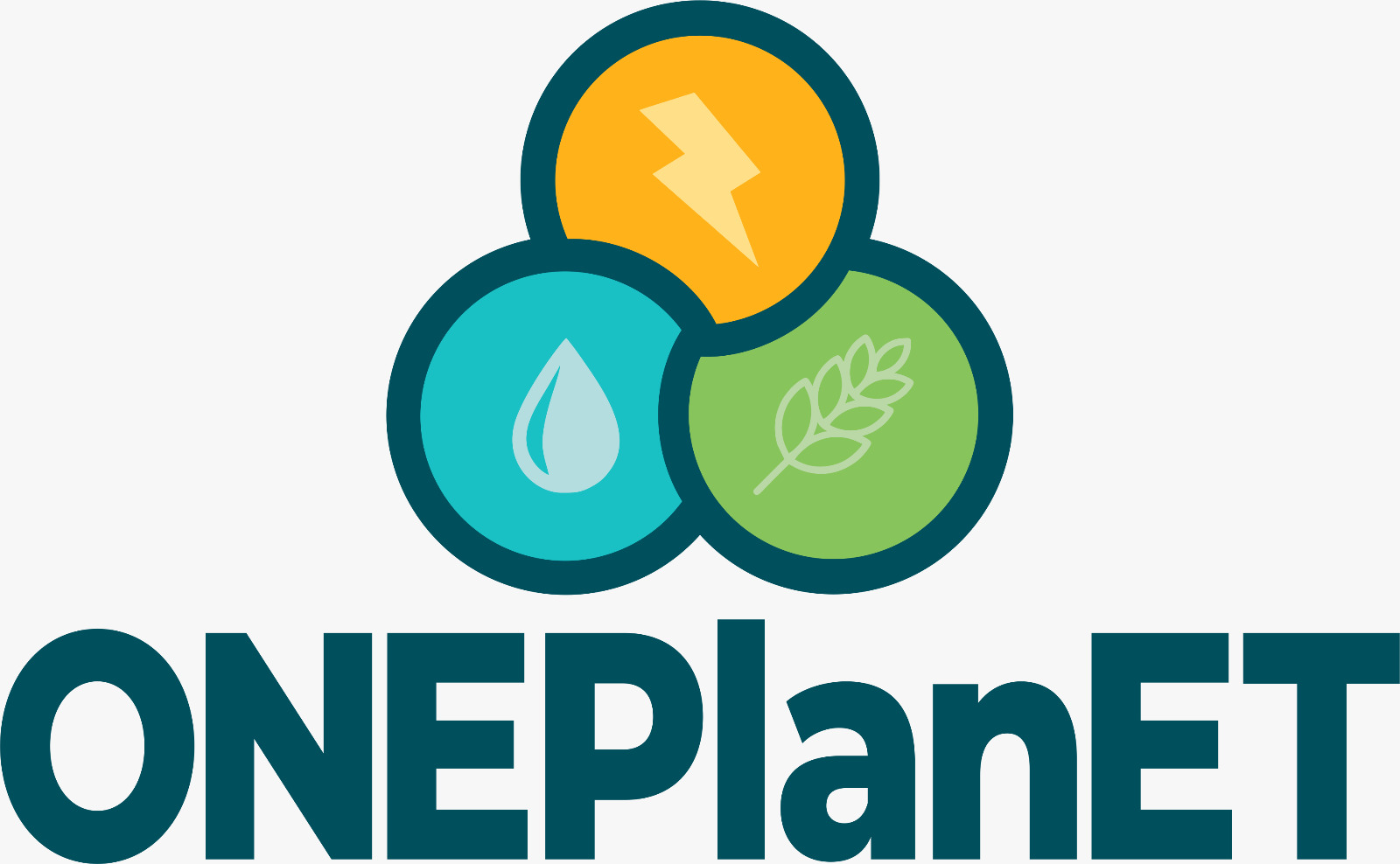
ONEPLANET. OpeN source nExus Modeling tools for planning a sustainable energy transition in Africa. Topic HORIZON-CL5-2021-D3-03-01. Action Type HORIZON-RIA
General Summary.
The ONEPlanET project aims to develop a common Nexus modeling framework to simulate and evaluate pathways to define a more sustainable future in Africa through the deployment of renewable energy infrastructures. In this way, it will be possible to stimulate a green energy transition on the continent, as well as the decarbonization of existing power plants. The ONEPlanET model will be tailored to the needs of different stakeholders and end users (public and private actors, policy and decision makers, experts and citizens) and will be fully open access to stimulate future updates. The model will include information on water, energy, food (World Economic Forum or WEF) and interrelationships with other sectors such as economy, ecosystems, society, climate and land to provide a multi-sectoral assessment consistent with socio-economic and climate scenarios. The ONEPlanET modeling approach will incorporate Earth observation data (e.g., Copernicus, ESA, or GEOSS), statistical data, and basin information at national and regional levels, through three representative case studies of the Songwe (Malawi-Tanzania), Inkomati-Usuthu (South Africa), and Niger (Nigeria) rivers, showing different types of watersheds and socio-ecological systems. ONEPlanET will help to better understand the interactions between Nexus sectors to provide sound technical and policy recommendations for the implementation of energy infrastructures to build a more climate neutral and robust society.
Main responsibilities of UVa:
WP3. Development of the ONEPlanET model.
The objectives of this WP are: (i) to develop a set of System Dynamic River Basin Models (SDM) based on the African needs identified in WP1 with a bottom-up approach; (ii) to incorporate the information and data collected by WP2 into the different modules of the SDM (built on Vensim software); iii) model the energy, water, food, economy-society, and climate modules using a systems dynamic approach; iv) integrate the different modules into a SDM taking into account all possible interrelationships between modules and avoiding overlaps; v) develop the technical validation of the implemented models.
Task 3.1. Modeling WEF sectors and interrelationships in the river basin case studies. The objective of this task is to model energy, water and food based on a modular architecture with a common set of variables and interrelationships from the models developed in Task 2.3, covering the particularities of each case study by capitalizing on the knowledge of pre-existing working IAMs (MEDEAS or WILIAM). Ongoing dialogue between model modules will improve modeling results by finding common and affected variables across sectors. The development of the single model modules will be addressed in the following subtasks, which will be developed in parallel and in close collaboration to ensure consistency and seamless integration:
Subtask 3.1.1. Energy Systems. This subtask will develop an energy module. The main modeling tasks are related to constraints on non-renewable resource stocks and flows (such as available resources in the ground as well as their rate of extraction), renewable sources for electricity generation and biofuels, and the infrastructure of energy production and transportation technologies. The approach will be to estimate and allocate energy production to the energy demand of the different economic sectors. This allows the calculation of energy availability and security. Elements such as endogenous and dynamic energy return on energy invested (EROI), energy intensities, energy intermittency, material requirements and GHG emissions will be included in the module.
Subtask 3.1.2. Water system (Leads OHE-Delft). This subtask will cover water resources and water use modeling activities, focusing on water demand and supply. Starting from a conceptual hydrological cycle, the components of the water system will be modeled. Activities will cover, for example, precipitation, evotranspiration, groundwater recharge and interactions with surface water, human interception through reservoirs, rainwater harvesting, desalination, water purification, anthropological use, and recycling and runoff. Water transfers between river basins will also be taken into account. The module will allow the calculation of the water balance to achieve water security.
Task 3.4. Model integration. This task will cover the activities for the continuous integration and testing of all implemented modules and policies that will cover the needs, requirements and specifications of each case study and ensure quality control of the model. This means to integrate under the common structure of the model the work done in the previous tasks of this WP by connecting and integrating the different modules, the database, as well as performing a technical validation process (correcting errors, making sure the model works, doing sensitivity analysis, etc.) and consistency checking.


